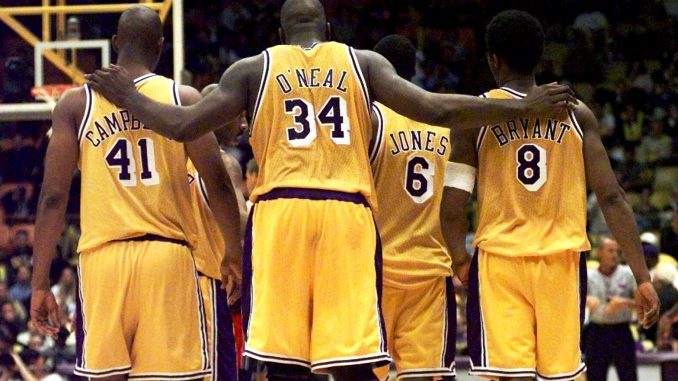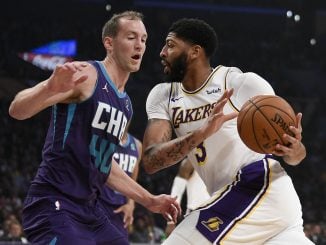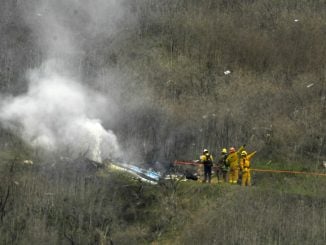
While we’ve been waiting for sports to resume following the COVID-19 pandemic, we’ve been busy rebuilding past seasons that have had games canceled due to labor unrest.
So far, we’ve reconstructed the 1981 and 1994 MLB seasons, as well as the 1982 and 1987 NFL seasons, erasing the black marks of a canceled World Series, a split season and NFL replacement players.
Now we turn to the NBA.
The 1998-99 NBA lockout lasted from July 1, 1998, to Jan. 20, 1999, eliminating the need for a hyphen in that year’s basketball season, since all the games took place in calendar year 1999. The league lost its traditional Christmas Day games as well as All-Star Weekend and had the season shortened to 50 games from its customary 82.
The season started in early February and was packed with back-to-back games.
The playoffs saw the eight-seed New York Knicks pull three straight upsets to advance to the NBA Finals, where they lost to the Spurs.
Let’s see what would have happened had they played the full schedule.
As a reminder, we’re not using computer or video game simulations or statistical tricks. Instead, we’re using actual action that took place on the court. Basically, for each canceled game, we’ll use the next time those two teams played (at the same venue) as a “makeup game.” For example, we would use games from the 2020-21 NBA and NHL seasons to fill in any holes left by the coronavirus in this year’s schedule.
Atlantic Division
The Knicks showed that the real fluke in their 1998-99 season wasn’t their playoff run but their regular season record, which was just four games over .500 in the 50-game real-life season. New York went 23-9 in the makeup games for a .719 winning percentage, best in the Eastern Conference. That vaulted them from the eighth seed to the third seed.
The Magic and Heat, who tied for first in the Atlantic after 50 games, both slowed down in the makeups. Miami dropped from the top overall seed in the East to No. 2 but still held onto first place by a game over the Knicks. Orlando fell from third to fourth after going .500 in the makeup games.
Central Division
The Pacers held onto first place in the Central, actually performing slightly better in the makeup games than the real-life ones. Their 22-10 makeup record gave them the top seed in the East.
Atlanta, meanwhile, saw the bottom drop out. Second in the Central and the fourth overall seed after 50 games, the Hawks went 11-21 in the makeup games and fell out of the playoffs.
The Charlotte Hornets went 19-13 in the makeups to take Atlanta’s spot, moving up from a ninth seed to the East’s seventh seed.
Midwest Division
The Western Conference saw some of the best basketball of the makeup games. Five teams in the West won at least 20 of their 32 makeups, compared to two teams in the East. San Antonio and Utah were tied for first in the Midwest Division after 50 games. The race continued neck-and-neck through the makeups with Utah pulling ahead with a 22-10 record, compared to the Spurs’ 21-11. San Antonio fell from the first overall seed in the West to third, while Utah moved up from the second seed to the top spot.

Houston went 10-22 in the makeups to fall from a fifth seed to just barely hold onto a playoff berth in the No. 8 spot by a tiebreaker over Seattle in the Pacific Division.
Pacific Division
The Los Angeles Lakers went 27-5 in the makeup games, an .844 percentage that was best in the NBA by two games. Their reward? The No. 4 seed in the West that was exactly the same as their seeding after 50 games. That’s because Portland went 24-8 to hold onto the top spot in the Pacific by one game. The Lakers needed all of their wins to hold off hard-charging Phoenix, which went 25-7 to threaten them from the fifth spot.
Playoffs
In the East, the top seeds all advanced in the first round with Indiana (3-1 over Milwaukee), Miami (3-1 over Charlotte), New York (3-1 over Philadelphia) and Orlando (3-2 over Detroit) moving on. New York’s playoff run ended in the next round in seven games against Miami. Indiana also went seven to top Orlando.
The Heat then got past the Pacers in seven games to win the Eastern Conference Finals and move onto the NBA Finals for what would have been the first time in franchise history.
Out West, two upsets shook up the bracket after the first round. The seventh-seeded Minnesota Timberwolves took out No. 2 Portland, three games to one, and sixth-seed Sacramento knocked off the Spurs in five games, meaning the makeup season would have a different champion than the one that was played in reality. The other two top seeds all advanced in No. 1 Utah (3-1 over Houston) and No. 4 Los Angeles (a sweep of Phoenix).
The Timberwolves’ Cinderella run continued with a 4-1 upset over Sacramento in the next round, while the Lakers beat Utah in seven games.
The Lakers then swept Minnesota to advance to the NBA Finals for the first time since 1991. Los Angeles beat the Heat four games to two to take their first title since 1988 and, potentially, change NBA history for the new millennium.
If Shaq and Kobe had actually won the title that season, with midseason replacement Kurt Rambis as coach, would they have resorted to bringing in Phil Jackson the following season? Would the Lakers’ early-2000s run have just added a fourth consecutive title to the mix, or would earlier success without Jackson there have caused the dynasty to implode sooner as Shaq and Kobe struggled to coexist?
Unfortunately, there’s no way to simulate that, so we’re left to wonder.



